Best laptops for CATIA | Conquering complex designs and intricate models demands the right tools. For engineers and architects wielding the mighty CATIA, choosing the perfect laptop isn’t just about portability, it’s about unleashing raw processing power and precision graphics to bring your visions to life. Fear not, fellow innovators! This guide dives deep into the best laptops for CATIA, expertly navigating specs and features to find the machine that seamlessly translates your ideas into reality. From raw performance beasts to portable powerhouses, get ready to discover the ideal laptop for your CATIA-fueled journey.

CATIA laptop requirements
- Operating system: Windows 10 or 11 64-bit
- Processor: 64-bit Intel Core i5 or better (i7 or Xeon recommended)
- Memory: Minimum of 8 GB of RAM (16 GB or more recommended)
- Graphics: Dedicated graphics card with 4GB of VRAM (NVIDIA Quadro or AMD Radeon Pro recommended)
- Storage: Solid-state drive (SSD) with at least 500GB of free space (1TB or more recommended)
- Display: 15.6-inch or larger display with a resolution of 1920×1080 or higher
The best laptops for CATIA
- ASUS Vivobook 16X Laptop ($1,199)
- Microsoft Surface Laptop Studio ($2,049)
- MSI Bravo 17 Laptop ($1,499)
- HP Victus 15.6″ Full HD 144Hz Gaming Laptop ($829)
- Dell Newest XPS 9710 Business Laptop ($1,899)
- Lenovo ThinkPad P15s Gen 2 Mobile Workstation ($949)
1. Vivobook 16X (Best ASUS laptop for CATIA)
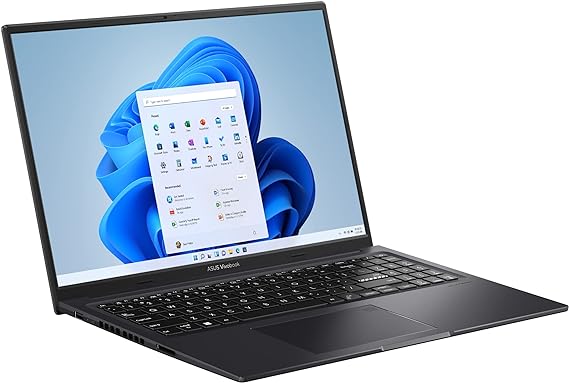
| Model Name | Vivobook 16X |
| Screen Size | 16 Inches |
| Color | Black |
| CPU Model | Core i9 |
| Ram Memory Installed Size | 16 GB |
| Operating System | Windows 11 Home |
| Storage | 1TB SSD |
| Graphics Coprocessor | NVIDIA GeForce RTX 4050 Dedicated |
| CPU Speed | 5.4 GHz |
The ASUS Vivobook 16X, with its impressive specifications and features, is an excellent choice for professionals working with CATIA, a complex 3D computer-aided design (CAD) software. Here’s why it stands out as one of the best laptops for CATIA:
Properties of Vivobook 16X
- Incredible Performance: The laptop’s Intel Core i9 processor and NVIDIA Geforce RTX 4050 graphics deliver exceptional performance, ensuring smooth and fast operation of CATIA, which demands substantial computing power for rendering and simulation tasks.
- Fast Charging Battery: The ASUS fast-charging technology allows you to recharge the battery quickly, ensuring that you have a reliable power source for extended CATIA sessions without significant interruptions.
- Extra Toughness and Durability: Meeting the MIL-STD 810G military standard ensures that the laptop is rugged and durable, making it suitable for professionals who may need to use CATIA in various environments.
- User-friendly and Secure: The inclusion of a fingerprint scanner and a laptop camera cover enhances privacy and security, crucial for professionals working on sensitive CAD projects.
- Effortless Typing Experience: The ErgoSense keyboard design reduces strain on hands and wrists, providing a comfortable typing experience during long hours of CATIA modeling and design work.
- Smooth Video Call Experience: The AI Noise-Canceling Technology ensures clear communication during virtual meetings or collaboration sessions, which is essential for CATIA users who often need to discuss and review designs remotely.
- Large Storage Capacity and Fast Speed: The 1TB SSD and up to 16GB RAM offer ample storage and fast data access speeds, contributing to seamless CATIA performance and quick loading of large design files.
- Generous Screen Size: The 16-inch FHD display with ultra-slim NanoEdge bezels provides an immersive visual experience, allowing CATIA users to view intricate details of their designs with clarity.
- Extensive and Stable Connectivity: Multiple laptop ports, including USB A, USB C, and HDMI, along with Wi-Fi 6E and Bluetooth 5, ensure stable and fast connectivity, facilitating data transfer and collaboration with external devices.
- Free Creative Software Bundle: The complimentary 1-month Adobe Creative Cloud subscription is an added bonus, providing CATIA users with access to additional creative tools that may complement their design and visualization workflows.
In summary, the ASUS Vivobook 16X combines powerful hardware, durability, user-friendly features, and extensive connectivity to make it an ideal choice for professionals working with CATIA, offering a comprehensive solution for demanding CAD tasks.
2. Microsoft Surface Laptop Studio
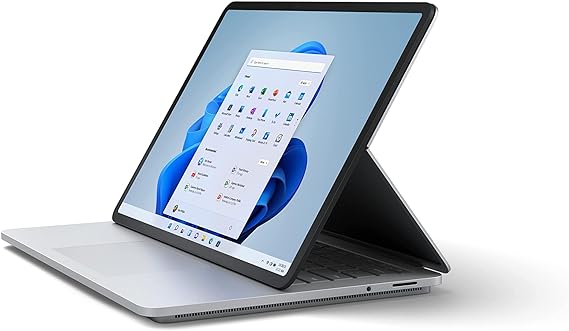
| Model Name | Surface Laptop |
| Screen Size | 14.4 Inches |
| Color | Platinum |
| Hard Disk Size | 2 TB SSD |
| CPU Model | Intel Core i7-11700 |
| Ram Memory Installed Size | 32 GB |
| Operating System | Windows 11 Home |
| Graphics Coprocessor | NVIDIA GeForce RTX 3050 Dedicated |
The Microsoft Surface Laptop Studio offers a compelling choice for users looking for the best laptops for CATIA, a powerful computer-aided design (CAD) software. Here’s why:
Properties of Surface Laptop
- High-Performance Processor: The laptop is equipped with quad-core 11th Gen Intel Core H Series processors, providing substantial processing power. This is crucial for handling complex CATIA workloads, ensuring smooth and efficient performance during 3D modeling and simulations.
- Graphics Capabilities: The inclusion of NVIDIA’s 2nd gen RTX architecture with the GeForce RTX 3050 Ti graphics card is a significant advantage. CATIA often involves intricate 3D modeling and rendering, and the powerful GPU enables the laptop to handle these tasks with ease, thanks to ray-traced graphics and AI features.
- Optimal Display for Design Work: The 3:2 aspect ratio and 14.4-inch PixelSense Flow touch display with a refresh rate of up to 120Hz provide a visually immersive experience. The uniform, true-to-life color and contrast enhance the accuracy of design work, ensuring that CATIA models are displayed accurately.
- Versatile Design: The laptop’s design, including the ability to transform into an entertainment-ready stage or a portable creative canvas, adds versatility. This feature can be particularly useful for presentations, collaborative work, or when a touchscreen interface is beneficial in CATIA design processes.
- Precision Input with Surface Slim Pen 2: The compatibility with the Surface Slim Pen 2 enhances the laptop’s usability for design tasks. The pen’s feeling of pen on paper is advantageous for sketching and fine-tuned design work in CATIA. The ability to magnetically attach, store, and charge the pen conveniently adds to its appeal.
- Immersive Audio and Graphics for Gaming: While CATIA is primarily a CAD software, the laptop’s immersive audio and graphics capabilities can also enhance the overall computing experience. This can be appealing for users who want a laptop that serves dual purposes – both professional design work and entertainment, including gaming during breaks.
- Microsoft 365 Integration: The mention of needing Word, Excel, and PowerPoint, along with the suggestion to add Microsoft 365, ensures seamless compatibility with standard productivity tools. This is essential for professionals using CATIA in conjunction with other Microsoft Office applications.
In conclusion, the Microsoft Surface Laptop Studio combines powerful hardware, a high-quality display, and thoughtful design features, making it a strong contender for professionals seeking the best laptops for CATIA. The laptop’s balance between performance, display quality, and versatility positions it well for demanding CAD applications like CATIA.
3. Bravo 17 Laptop (Best MSI laptop for CATIA)
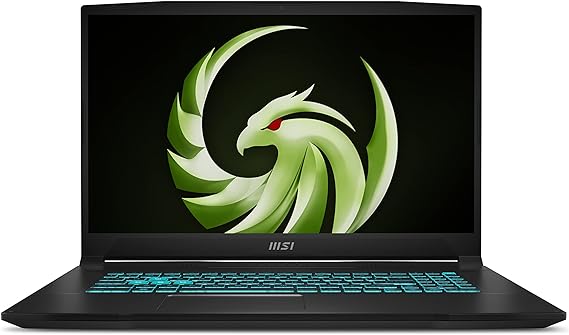
| Model Name | Bravo 17 C7VFK-039US |
| Screen Size | 17.3 Inches |
| Color | Black |
| Hard Disk Size | 1 TB SSD |
| CPU Model | Ryzen 7 |
| Ram Memory Installed Size | 32 GB |
| Operating System | Windows 11 Pro |
| Special Feature | Backlit Keyboard |
| Graphics Card Description | GeForce RTX 4060 Dedicated |
The MSI Bravo 17 laptop with the specified features is a solid choice for users looking for a laptop suitable for CATIA, a powerful and resource-intensive computer-aided design (CAD) software. Here’s a breakdown of why it’s a good choice for this purpose:
Properties of Bravo 17
- Processor Power (Ryzen 7 7735HS): The AMD Ryzen 7 7735HS processor is a high-performance chip with multiple cores and threads, providing ample processing power for complex CAD tasks in CATIA. This ensures smooth handling of 3D models and simulations.
- Graphics Capability (GeForce RTX 4060): The inclusion of the GeForce RTX 4060 graphics card is crucial for CAD applications. CATIA, in particular, benefits from a powerful GPU for rendering and visualization tasks. The RTX series is known for its real-time ray tracing capabilities, which can enhance the visual quality of CAD designs.
- Large and High-Resolution Display (17.3″ FHD, 144Hz): The 17.3-inch Full HD display with a 144Hz refresh rate provides a spacious and crisp viewing area, allowing users to work on intricate details of CAD models. The high refresh rate contributes to smoother animations and transitions, enhancing the overall user experience.
- Ample Memory (32GB DDR5): CAD applications, including CATIA, can be memory-intensive. The 32GB DDR5 RAM in this laptop ensures that there’s enough memory for multitasking and handling large datasets in CATIA without experiencing slowdowns or lag.
- Storage Speed (1TB NVMe SSD): The 1TB NVMe SSD not only offers a spacious storage capacity for CAD files but also ensures fast data access and quick loading times for applications. This is beneficial for users who frequently access and modify large CAD files.
- Type C Connectivity: The inclusion of a Type-C port enhances connectivity options, allowing for faster data transfer and compatibility with modern peripherals. This can be useful for users who need to connect external devices or transfer large CAD files quickly.
- Cooling System (Cooler Boost 5): CAD applications can be demanding on system resources, leading to increased heat generation. The Cooler Boost 5 technology helps in keeping the laptop’s temperature in check during prolonged CAD sessions, ensuring optimal performance.
- Operating System (Windows 11 Pro): The laptop comes with Windows 11 Pro, providing a stable and secure operating system environment for running CATIA and other CAD software applications.
In summary, the MSI Bravo 17 with its powerful processor, dedicated graphics, large and high-resolution display, ample memory, fast storage, and advanced cooling features makes it a commendable choice for professionals and enthusiasts working with CATIA and other CAD applications.
4. HP Victus (Best hp laptop for CATIA gaming)
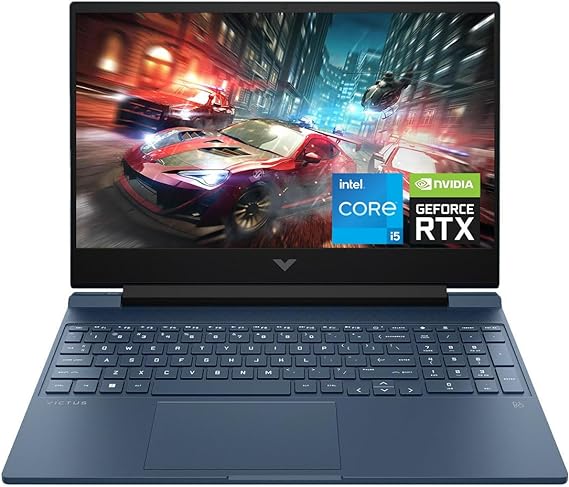
| Model Name | Victus 15.6 |
| Screen Size | 15.6 Inches |
| Hard Disk Size | 1 TB |
| CPU Model | Intel Core i5 |
| Ram Memory Installed Size | 16 GB |
| Operating System | Windows 11 |
| Special Feature | Backlit Keyboard |
| Graphics Card Description | Dedicated |
| Graphics Coprocessor | NVIDIA GeForce RTX 3050 |
The HP Victus laptop with the specified features is a strong contender for the title of “Best laptop for CATIA” for several reasons:
Properties of HP Victus
- Powerful Processor: The Intel 13th Generation Core i5 13420H processor with 8 cores and a turbo boost up to 4.6 GHz offers substantial processing power. CATIA, being a demanding software, requires a robust processor to handle complex designs and simulations effectively. The i5 13420H is more than capable of handling CATIA’s computational requirements.
- Ample Memory and Storage: With 16GB DDR4-3200 MHz RAM and a 1TB PCIe NVMe SSD, this laptop provides ample memory and storage capacity. CATIA projects can often involve large files and datasets, and having sufficient RAM ensures smooth multitasking and data handling. The SSD storage further enhances the overall performance by providing faster read/write speeds, which is crucial for loading large CAD files quickly.
- Dedicated Graphics Card: The NVIDIA GeForce RTX 3050 graphics card is well-suited for CAD applications like CATIA. It offers dedicated graphical processing power, enabling smooth rendering, manipulation, and visualization of 3D models and assemblies within CATIA’s interface.
- High Refresh Rate Display: The 15.6-inch 144Hz FHD anti-glare display ensures a smooth and immersive visual experience. This feature is beneficial for CAD professionals who spend extended periods working on intricate designs, as it reduces eye strain and enhances overall productivity.
- Connectivity Options: The variety of ports, including HDMI 2.1, USB-A 3.1, USB-C 3.0, Bluetooth, and Wi-Fi, ensure seamless connectivity with external devices and networks. This is important for CATIA users who may need to connect additional peripherals such as external monitors, input devices, or network accessories.
- Windows 11 Operating System: The inclusion of Windows 11 provides a modern and optimized operating environment for running CATIA and other CAD software efficiently. It offers enhanced security features, improved multitasking capabilities, and a user-friendly interface, contributing to a better overall computing experience.
In summary, the HP Victus laptop offers a balanced combination of performance, storage, graphics capabilities, and connectivity options, making it an excellent choice for professionals working with CATIA and other demanding CAD applications.
5. XPS 9710 (Best Dell laptop for CATIA)
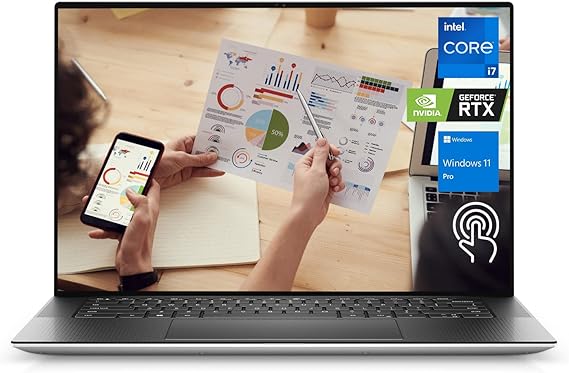
| Model Name | XPS |
| Screen Size | 17 Inches |
| Color | Silver |
| Hard Disk Size | 1 TB |
| CPU Model | Core i7 Family |
| Ram Memory Installed Size | 32 GB |
| Operating System | Windows 11 Pro |
| Special Feature | Backlit Kb |
| Graphics Card Description | NVIDIA GeForce RTX 3060 6GB Dedicated |
The Dell XPS 9710 Laptop presents a compelling option for users engaging in CATIA, a demanding software for computer-aided design and engineering. Here’s why it stands out as a strong choice:
Properties of XPS 9710
- Powerful Processor and Graphics: The Intel Core i7-11800H processor with 8 cores and 16 threads, coupled with the NVIDIA GeForce RTX 3060 6GB graphics card, provides substantial computing power and graphical capabilities necessary for running CATIA smoothly, especially for tasks involving complex simulations and rendering.
- High-speed RAM and Ample Storage: The 32GB high-bandwidth DDR4 RAM ensures smooth multitasking and handling of large CAD files, while the 1TB PCIe Solid State Drive offers ample storage space for CATIA projects and related data.
- High-Resolution Display: The 17.0″ UHD+ InfinityEdge Touch Anti-Reflective 500-Nit Display delivers crisp and detailed visuals, which is essential for precise modeling and viewing intricate designs in CATIA.
- Connectivity Options: The laptop comes equipped with 4 Thunderbolt 4 ports with power delivery & DisplayPort, offering versatile connectivity options for external displays and peripherals commonly used in CAD workflows. Additionally, the full-size SD card reader is convenient for transferring files, while the headphone/microphone combo jack caters to audio needs.
- User Convenience Features: The inclusion of a fingerprint reader enhances security, while the backlit keyboard enables comfortable typing in low-light environments, which can be useful for extended design sessions. Moreover, Wi-Fi 6 and Bluetooth connectivity ensure seamless networking and device compatibility.
- Optimized Operating System: The laptop comes pre-installed with Windows 11 Pro, providing a user-friendly interface and productivity-enhancing features that can streamline CATIA workflows, such as improved multitasking capabilities and enhanced collaboration tools.
Overall, the Dell XPS 9710 Laptop offers a well-rounded package of performance, display quality, connectivity, and convenience features, making it a strong contender for users seeking the best laptop for CATIA.
6. Lenovo ThinkPad P15s Gen 2 Mobile Workstation

| Model Name | ThinkPad P15s Gen 2 |
| Screen Size | 15.6 Inches |
| Color | Black |
| Hard Disk Size | 1 TB |
| CPU Model | Core i5 |
| Ram Memory Installed Size | 40 GB |
| Operating System | Windows 11 Pro |
| Special Feature | Fingerprint Reader, Spill resistant, Anti Glare Coating, Numeric Keypad |
| Graphics Card Description | NVIDIA Quadro T500 Dedicated |
The Lenovo ThinkPad P15s Gen 2 Mobile Workstation is an excellent choice for professionals working with CATIA, a sophisticated 3D modeling and CAD software. Here’s why:
Properties of ThinkPad P15s Gen 2
- Powerful Performance: Equipped with an Intel Quad Core i5-1135G7 processor, 40GB DDR4 memory, and 1TB PCIe NVMe M.2 SSD, this laptop offers exceptional processing power and storage capabilities. CATIA demands significant computational resources, and this configuration ensures smooth performance even with complex designs and simulations.
- NVIDIA Quadro Graphics: The NVIDIA Quadro T500 4GB dedicated graphics card provides high-quality graphics rendering, crucial for handling CATIA’s demanding graphical requirements. It ensures smooth model manipulation, visualization, and rendering, enhancing the user experience and productivity.
- Expandable Display Options: With support for up to three external monitors via HDMI or Thunderbolt 4 ports, users can create expansive workspaces for multitasking and improved workflow efficiency. This feature is particularly useful for CATIA users who often work with multiple views and complex assemblies.
- Certifications from ISVs: The laptop is certified by Independent Software Vendors (ISVs) like Dassault Systèmes, the developer of CATIA. These certifications guarantee compatibility and optimal performance with CATIA and other professional software applications commonly used in engineering and design, such as SolidWorks, Creo, and AutoCAD.
- Windows 11 Professional: The inclusion of Windows 11 Professional 64-bit ensures a secure and productive computing environment, with features tailored for business and professional users. It provides a stable platform for running CATIA and other critical applications.
- Portability and Durability: Despite its powerful hardware, the ThinkPad P15s Gen 2 remains lightweight and portable, making it suitable for professionals who need to work on-the-go or collaborate in different locations. Its robust build quality, including military-grade durability and reliability, ensures it can withstand the rigors of daily use in various environments.
Overall, the Lenovo ThinkPad P15s Gen 2 Mobile Workstation offers the perfect combination of performance, graphics capabilities, compatibility, and portability, making it an excellent choice for professionals seeking the best laptops for CATIA and other demanding engineering and design applications.
Conclusion – Best laptops for CATIA
Choosing the best laptop for CATIA ultimately depends on your specific needs and budget. Whether you’re a seasoned professional demanding peak performance or a student seeking a reliable learning companion, prioritize the specs that matter most to your workflow. Remember, the ideal CATIA companion isn’t just about sheer power; consider factors like portability, battery life, and even keyboard comfort for long hours of design sessions. With careful consideration and research, you’ll find the perfect laptop to unlock your full potential in the world of CATIA.
FAQs – Best laptops for CATIA
CATIA, the industry-leading 3D design software, demands a powerful workstation to unleash its full potential. For engineers, architects, and product designers, finding the perfect laptop becomes crucial. But wading through specs and technical jargon can be daunting. Worry not! This FAQ dive deeps into the world of CATIA-compatible laptops, answering all your burning questions about processors, graphics cards, RAM, and more. So, buckle up and get ready to navigate the perfect machine for your demanding design needs.
In this section, we will look for answers to the following frequently asked questions about laptops for CATIA.
- How much RAM is needed for CATIA?
- What is the best processor for CATIA?
- What are the hardware requirements for CATIA V5?
- What graphics card is best for CATIA?
- Is CATIA CPU or GPU intensive?
- Is graphics card necessary for CATIA?
1. How much RAM is needed for CATIA?
The amount of RAM you need for CATIA depends on the complexity of your projects and workflow. Here’s a general guide:
Minimum:
- 16GB: This is the absolute minimum, and you may experience slowdowns and crashes with even moderately complex assemblies. It’s only suitable for basic 2D drafting and small 3D models.
Recommended:
- 32GB: This is a good sweet spot for most users. It will handle most mainstream projects fairly well, including medium-sized assemblies and moderate rendering work.
- 64GB: Ideal for heavy users or professionals working with large assemblies, complex simulations, or rendering high-resolution images and videos. It provides extra breathing room for multitasking and future-proofing your system.
Beyond 64GB:
- While rare, some heavy users working with enormous datasets or highly demanding simulations may benefit from even more RAM (128GB or higher).
Additional factors to consider:
- Type of work: If you primarily do 2D drafting or work with small assemblies, 16GB might be sufficient. However, if you work with large assemblies, perform simulations, or do a lot of rendering, you’ll definitely need more.
- Number of applications: If you run CATIA alongside other resource-intensive programs, you’ll need more RAM to avoid bottlenecks.
- Operating system: 64-bit operating systems can utilize more RAM than 32-bit systems.
In summary:
- 16GB is the bare minimum, but expect sluggish performance with complex projects.
- 32GB is a good starting point for most users.
- 64GB is ideal for heavy users or demanding projects.
- Consider your specific workflow and additional software usage when deciding.
Ultimately, the best way to determine your ideal RAM amount is to experiment and see what works best for your needs and budget.
2. What is the best processor for CATIA?
Unfortunately, there’s no single “best” processor for CATIA, as the ideal choice depends on several factors specific to your usage and budget. However, I can help guide you towards a suitable option based on different aspects:
General recommendations:
- Clock speed: CATIA benefits significantly from higher clock speeds. Aim for processors with a base clock of at least 3.5 GHz and a Turbo Boost frequency exceeding 4 GHz.
- Core count: While CATIA primarily utilizes single-core performance, having more cores can benefit specific workflows and multitasking. 8-12 cores is a sweet spot for most users, but consider 16-core CPUs for complex models or heavy multitasking.
- Instruction sets: Look for processors supporting AVX (Advanced Vector Extensions) and AVX-512, which improve CATIA’s performance for specific calculations.
Specific processor options:
- High-end:
- AMD Ryzen Threadripper PRO 5995WX: 64 cores, 4.8 GHz max boost, excellent for heavy loads and futureproofing.
- Intel Core i9-13900K: 24 cores, 5.8 GHz max boost, good balance of performance and cost.
- Mid-range:
- AMD Ryzen 7 7800X: 8 cores, 5.3 GHz max boost, strong single-core performance at a reasonable price.
- Intel Core i7-13700K: 16 cores, 5.4 GHz max boost, ideal for most moderate to demanding CATIA workloads.
- Budget-friendly:
- AMD Ryzen 5 7600X: 6 cores, 4.7 GHz max boost, entry-level option for less demanding work.
- Intel Core i5-13600K: 14 cores, 5.1 GHz max boost, decent performance for basic to moderate use.
Additional considerations:
- Memory: Pair your CPU with ample DDR5 RAM (32GB minimum, 64GB or more recommended).
- Graphics card: A powerful GPU greatly improves CATIA’s 3D rendering and visualization. Dedicated professional NVIDIA RTX A-series cards are ideal, but high-end gaming GPUs like RTX 4080 can also work well.
- Storage: Opt for a fast NVMe SSD for fast loading times and responsiveness.
Remember, these are just starting points. Research specific processor models and benchmark comparisons to find the best fit for your specific needs and budget.
3. What are the hardware requirements for CATIA V5?
The hardware requirements for CATIA V5 can vary depending on several factors, including:
- The specific release and service pack of CATIA V5 you’re using: Later versions and service packs tend to have higher hardware demands.
- The types of tasks you’ll be performing: Working with large assemblies, complex simulations, or advanced features will require more powerful hardware.
- Your operating system: CATIA V5 is mainly supported on Windows 10 and 11 64-bit, with some limited support for older versions and other operating systems.
However, here’s a general overview of the minimum and recommended hardware requirements for CATIA V5:
Minimum:
- Processor: Intel Core i5 or equivalent
- Memory (RAM): 4 GB
- Graphics card: A graphics adapter with a 3D OpenGL accelerator
- Disk drive: 2.5 GB free space
- Operating system: Windows 10 or 11 64-bit
Recommended:
- Processor: Intel Core i7 or equivalent
- Memory (RAM): 8 GB (16 GB or more for large assemblies and simulations)
- Graphics card: NVIDIA Quadro or AMD FirePro professional graphics card (recommended for heavy 3D work)
- Solid-state drive (SSD): Highly recommended for faster loading times and performance
- Operating system: Windows 10 or 11 64-bit
4. What graphics card is best for CATIA?
Determining the absolute “best” graphics card for CATIA depends on several factors specific to your workflow and budget. However, I can guide you towards some excellent options:
Top Choices:
- NVIDIA Quadro RTX A5000: This powerhouse GPU boasts 24GB of VRAM and 8192 CUDA cores, offering exceptional performance for demanding CATIA tasks like large assemblies and real-time rendering. However, it comes with a hefty price tag.
- NVIDIA Quadro RTX A4000: Offering 16GB of VRAM and 5120 CUDA cores, it delivers smooth performance for most CATIA needs and a balanced price-performance ratio.
- AMD Radeon™ PRO W7800: A fantastic alternative from AMD, it features 32GB of GDDR6 memory and excels in handling super-sized assemblies. It also supports four professional displays with up to 8K resolution.
More Budget-Friendly Options:
- NVIDIA Quadro RTX A2000: A solid choice for moderate CATIA workloads, it packs 6GB of VRAM and 3072 CUDA cores.
- NVIDIA Quadro P4000: While discontinued, it can still be found secondhand and offers decent performance for most CATIA tasks.
Considerations Beyond GPU:
- VRAM: This is crucial for handling large models and textures. 16GB or more is ideal for demanding workflows.
- Drivers: Ensure you choose certified drivers for optimal CATIA compatibility and performance.
- CPU and RAM: Don’t neglect these components. A strong CPU and ample RAM (32GB+ recommended) will significantly impact your CATIA experience.
5. Is CATIA CPU or GPU intensive?
CATIA’s intensity on CPU vs. GPU depends on several factors, most notably the version you’re using:
CATIA V5:
- Primarily CPU-intensive: V5 was released in 1998 before widespread multi-core CPUs and powerful GPUs. It utilizes only 2-4 CPU cores at most, limiting the benefit of modern high-core CPUs. GPU usage is typically minimal (<10%), even with powerful graphics cards.
- Upgrade to V6 for better GPU utilization: CATIA V6 offers much better GPU acceleration, utilizing it for tasks like rendering, visualization, and model manipulation. Still, some functionalities are primarily CPU-driven.
CATIA 3DEXPERIENCE:
- Hybrid CPU/GPU approach: 3DEXPERIENCE leverages both the CPU and GPU, with the balance depending on the specific task. Certain operations like analysis and simulation rely heavily on the CPU, while rendering and model interaction benefit significantly from a strong GPU.
General tips:
- Regardless of the version, a strong multi-core CPU is always essential for CATIA. 8 cores or more is recommended.
- For V6 and 3DEXPERIENCE, a dedicated professional GPU can significantly improve performance, especially for large assemblies and complex operations.
- Ensure you have certified drivers for both your CPU and GPU for optimal compatibility with CATIA.
Ultimately, the best hardware setup for CATIA depends on your specific needs and budget. Consider the version you’re using, the types of tasks you perform most frequently, and your desired level of performance.
6. Is graphics card necessary for CATIA?
While not strictly necessary for running CATIA, a dedicated graphics card can significantly improve your experience, especially for:
- Smoother performance: Complex models and large assemblies can put a strain on integrated graphics, leading to lag and stuttering during navigation and manipulation. A dedicated graphics card offloads this processing, resulting in a smoother and more responsive experience.
- Better visual quality: Dedicated graphics cards offer better rendering capabilities, leading to sharper visuals, higher frame rates, and more realistic shadows and lighting effects. This can be crucial for tasks like presentations, rendering photorealistic images, and working with intricate details.
- VR support: If you plan on using CATIA with VR applications, a powerful graphics card is essential for ensuring a smooth and immersive experience.
However, the necessity of a graphics card ultimately depends on your specific needs and usage:
- Basic tasks: If you only use CATIA for basic 2D drafting or simple 3D modeling with small assemblies, an integrated graphics card might suffice.
- Moderate workloads: For moderate workloads like working with medium-sized assemblies or rendering basic images, a mid-range dedicated graphics card can provide a significant performance boost.
- Demanding tasks: For complex models, large assemblies, VR applications, or high-quality rendering, a high-end graphics card is highly recommended.
Here’s a general guideline:
- Integrated graphics: Suitable for basic 2D drafting and simple 3D modeling.
- Mid-range dedicated graphics card: Good for moderate workloads like medium-sized assemblies and basic rendering.
- High-end dedicated graphics card: Ideal for demanding tasks like complex models, large assemblies, VR applications, and high-quality rendering.
Ultimately, the decision of whether or not to get a graphics card for CATIA depends on your budget and specific needs. If you’re unsure, consider consulting with a system builder or IT professional who can help you choose the right hardware for your requirements.
Here are some popular graphics card options for CATIA:
- NVIDIA RTX 3070/3080: High-end cards offering excellent performance for demanding tasks.
- AMD Radeon RX 6700XT/6800XT: Powerful cards providing good value for money.
- NVIDIA RTX A4000/A5000: Professional-grade cards certified for CATIA and other demanding applications.

